 September 21, 2017 John E. Ross, KD8IDJ, Editor
| ||||||
Hurricane Redux: Amateur Radio Community Fires Up for Maria Caribbean Island residents and the Amateur Radio community hardly had a chance to catch a breath from Hurricane Irma, as recovery operations continue, before Hurricane Maria was knocking on the door. The Hurricane Watch Net (HWN) activated September 18 on 14.325 MHz and on 7.268 MHz (after dark). The VoIP Hurricane Net activated the same day to track Hurricane Maria and its potential impact in the The Federal Emergency Management Agency (FEMA) opened 60-meter interoperability nets on September 19, using Channel 1, 5.330.5 MHz (primary voice traffic) and Channel 2, 5.346.5 MHz (digital traffic). These will remain active until the storm has passed and the need for these nets no longer exists. The Salvation Army Team Emergency Radio Network (SATERN) has been on Delta II extended monitoring status on its 14.265 MHz frequency. "Although the US Virgin Islands were heavily damaged, it was apparent that they had some limited communications capabilities and other resources," SATERN National Liaison Bill Feist, WB8BZH, said on September 21. "Puerto Rican operators reported that there was an island-wide power and communications blackout. It was reported that Amateur Radio seemed to be the only communications that were operational, and that was somewhat limited, as many 2-meter repeater systems were still not operational."
Maxim Memorial Station W1AW at ARRL Headquarters resumed its normal schedule of transmissions on Thursday morning, although the station has not yet been reopened to visitors. W1AW will continue monitoring active nets and 60-meter interoperability channels as needed. The station was helping to support the communication response to Hurricane Maria, monitoring the HWN, SATERN, the VoIP Hurricane Net, and the Caribbean Emergency Weather Net (CEWN), as well as checking Winlink2000 e-mail and providing interoperability support by keeping various frequencies open for hurricane traffic. The station was staffed around the clock during the communication emergency. The Hurricane Watch Net, the VoIP Hurricane Net, and WX4NHC stood down on September 20. The HWN was active for about 60 hours. Visit the ARRL website for updates on Hurricane Maria and Hurricane Irma news and information, as well as the ARRL news page. Reports of Hurricane Devastation on Dominica Relayed by Amateur Radio In the immediate aftermath of then-Category 5 Hurricane Maria's passage over Dominica on Monday, Frans van Santbrink, J69DS, on St. Lucia checked into the VoIP Hurricane Net to relay damage reports he'd gathered via repeater conversations with other hams there. The New York Times also reported and posted audio that Amateur Radio was a primary source to gather initial damage reports from the storm-ravaged Caribbean Island nation of some 70,000 residents. US-based Julian Antoine, J73JA, solicited reports via a VoIP connection with the J73MAN repeater on Dominica.
A subsequent responder reported, "Lots of flooding, water coming into windows and doors," while another indicated that though he was "nice and dry now," he had lost his roof and was at a shelter. "From what I've seen so far, it's pretty bad," another report stated. The same responder said he could see some landslides too, along with broken trees and utility poles. "It's just damage all over," John Christian, J73CC, said. VoIP Hurricane Net Operations Director Rob Macedo, KD1CY, told ARRL that he recorded the audio that The New York Times used on Tuesday while he was monitoring the J62DX-L link on EchoLink. In his report to the VoIP Hurricane Net, van Santbrink recounted a damage account from Kerry Fevrier, J69YH, in Roseau, Dominica. "Trees down, river has flooded half the village, cars are all over, most houses have lost their roofs or are destroyed, the area between his house and the church is just flattened...in his words, 'devastation is total,'" van Santbrink told the net. He also heard from J73CI, who lost his roof; J73WA on the northern end of the island, who lost his tower and was uncertain how he was going to weather the back end of the storm, and J73MH, who also lost his roof and was "just hunkering down and hoping for the best." Emergency Communications Director, IARU Region 2, Area E Noel Donawa, 9Y4X, reported on September 21 that the Office of Disaster Management in Dominica's capital, Roseau, is now in operation using Amateur Radio communication. "Only official traffic will be handled to assist in getting government services functional," he said. "As soon as personnel from the Regional Security System (RSS) search-and-rescue damage assessment teams are deployed, health-and-welfare messages from family and friends will be addressed. As of Wednesday afternoon, the Caribbean Emergency Weather Network (CEWN) continued to handle outbound health-and-welfare and other necessary traffic from Dominica on 7.188 and 3.815 MHz. The net has requested a clear frequency. No emergency operations center had been established, airports remained closed, and damage assessment of the seaports was under way, which would determine how soon relief supplies and significant human resources can access the island. -- Thanks to the VoIP Hurricane Net; The New York Times; Rob Macedo, KD1CY; Jeff Austin, 9Y4J Amateur Radio Emergency Net Active in Wake of Earthquake in Central Mexico The FMRE National Emergency Net (Red Nacional de Emergencia or RNE) activated Tuesday on 7.060 MHz following a magnitude 7.1 earthquake in the central Mexico state of Puebla at 1814 UTC. The epicenter was some 75 miles southeast of Mexico City, which also felt the temblor and suffered damage.
The FMRE National Emergency Net also may use 3.690 MHz and 14.120 MHz as well as IRLP reflector 9200 channel 08, and EchoLink.
The Doctor Will See You Now! "How High is High Enough" -- a discussion on the effects of antenna height -- is the topic of the current episode of the "ARRL The Doctor is In" podcast. Listen...and learn! Sponsored by DX Engineering, "ARRL The Doctor is In" is an informative discussion of all things technical. Listen on your computer, tablet, or smartphone -- whenever and wherever you like!
Enjoy "ARRL The Doctor is In" on Apple iTunes, or by using your iPhone or iPad podcast app (just search for "ARRL The Doctor is In"). You can also listen online at Blubrry, or at Stitcher (free registration required, or browse the site as a guest) and through the free Stitcher app for iOS, Kindle, or Android devices. If you've never listened to a podcast before, download our beginner's guide. Just ahead: "Soldering and Unsoldering." Amateur Radio Supported Hurricane Irma Response in US Virgin Islands Members of the St. Croix Amateur Radio Club supported the Hurricane Irma response at the Virgin Islands Territorial Emergency Management Agency (VITEMA), utilizing 60-meter band channel 2 (5.346.5 MHz USB) to coordinate emergency communications. The club's NP2VI served as the net control station at the St. Croix Emergency Operations Center (EOC). Participants included the Virgin Islands National Guard Joint Force Headquarters, National Guard Task Forces, and VITEMA EOCs on St. Croix and St. Thomas. Puerto Rico Army MARS members also participated. FEMA posted personnel on two Navy vessels, and they worked directly with USVI amateurs via 60-meter interoperability channels.
Amateur Radio operators on St. Thomas, St. Croix, and St. John were involved in the response. "Our local communications team is doing what we are trained to do," USVI Section Manager Fred Kleber, K9VV, said. "Our NIMS [National Incident Management System] training has paid off in spades." Ham radio volunteers were instrumental in passing critical safety-of-life communications in the days immediately following Hurricane Irma, accessing a 2-meter repeater from the VITEMA EOC. Operators quickly disseminated important relief information (curfew hours, points of distribution, weather bulletins, seaport status) and served as the relay between the EOCs and emergency support functions, and St. John Rescue and St. Croix using 2 meters. Operators also have provided assistance in coordinating private and military landings of supplies as well as medical evacuations at the St. John Medical Center. The USVI now are dealing with the aftermath of Hurricane Maria. -- Thanks to Garry Green, VITEMA; The ARRL Contest Update FCC Opens 630- and 2200-Meter Bands; Stations Must Notify UTC Before Operating The FCC has announced that the Office of Management and Budget has approved, for 3 years, the information-collection requirement of the Commission's March 29 Report and Order (R&O) that spelled out Amateur Radio service rules for the two new bands -- 630 meters (472-479 kHz) and 2200 meters (135.7-137.8 kHz). Notice of the action appeared in the September 15 edition of the Federal Register. Before using either band, stations must notify the Utilities Technology Council (UTC) that they plan to do so. If UTC does not respond within 30 days, they may commence operation.
"Amateur stations will be permitted to commence operations after a 30-day period, unless UTC notifies the station that its fixed location is located within 1 kilometer of Power Line Carrier (PLC) systems operating on the same or overlapping frequencies," the FCC said. PLC systems are unlicensed. "This notification process will ensure that amateur stations seeking to operate [on 630 or 2200 meters] are located beyond a minimum separation distance from PLC transmission lines, which will help ensure the compatibility and coexistence of amateur and PLC operations, and promote shared use of the bands."
HamSCI Presents Initial Eclipse Results at ARRL-TAPR Digital Communications Conference At the 36th annual ARRL and TAPR Digital Communications Conference (DCC), held September 15-17 in St. Louis, members of the HamSCI group presented preliminary evidence that the August 21 solar eclipse had a significant effect on HF propagation. The DCC is geared toward technically minded Amateur Radio operators who specialize in building and designing hardware and software to support digital communication and radio.
John Ackermann, N8UR, described his work in making wideband recordings during the eclipse in his presentation, "How to Fill a Terabyte Disk: Using Software Defined Radios in the HamSCI Solar Eclipse Experiment."
In addition to the conference presentation, three New Jersey Institute of Technology (NJIT) HamSCI papers were included in the conference Proceedings. "HamSCI and the 2017 Total Solar Eclipse (Experiment Description)," by Frissell et al., details the procedures for the HamSCI eclipse experiments. "The H.A.R.C. Database and Visualization Utilities," by Katz et al., describes a database for unifying RBN, PSKReporter, WSPRNet, and other Amateur Radio propagation data in one place for research purposes. Vega's "Developing a Solar Eclipse Simulation for Greater Good" describes how to simulate the SEQP using the PHaRLAP raytracing toolkit and SAMI3 model of the eclipsed ionosphere. HamSCI team members announced that the HamSCI Workshop will be held at NJIT in Newark on February 23-24. IARU Administrative Council Considers New Radio Spectrum Pollution Threat The Administrative Council (AC) of the International Amateur Radio Union (IARU) believes high-power wireless power transfer (WPT) for electric vehicles has significant potential to interfere with radio communication. That assessment came as the AC met on September 15 and 16 in Landshut, Germany, immediately prior to the IARU Region 1 Conference, to review its priorities and positions with regard to the 2019 World Radiocommunication Conference (WRC-19). Conference Agenda Item 9.1.6 would call for studies in advance of WRC-23 to assess the impact of WPT for electric vehicles on radiocommunication services and to study suitable harmonized frequency ranges to minimize its impact. The AC determined that addressing the threat requires an increased commitment of resources by potentially affected radiocommunication services, including Amateur Radio.
As the ITU explained in its August 2016 report, "Applications of wireless power transmission via radio frequency beam," WPT technology is considered a game-changer. "We will be able to become free from lacking electric power when electric power will be supplied wirelessly," the report said. WPT vehicle applications typically use frequencies in the LF and MF range. In addition to WPT, the WRC-19 agenda includes several other items of potential concern to radio amateurs and a possible allocation in Region 1 of 50-54 MHz to the Amateur Service to harmonize with the allocations in the other two International Telecommunication Union (ITU) regions. Delegates reviewed and updated the strategic plan to develop support for amateur spectrum allocations in 2016-2020, and they approved action plan for the remainder of 2017 and 2018. They also reviewed and adopted the IARU 2018-2020 budget, based upon anticipated financial contributions from the IARU International Secretariat and the three regional organizations. The budget adopted reflects ongoing efforts to minimize expenses. Regional representatives on the AC reported progress in their areas, including the successful Amateur Radio Administration Course, a course attended by administrators from several Latin American countries that was offered earlier this year in Mexico City. Tore Worren, LA9QL, was appointed as EMC Coordinator, replacing Thilo Kootz, DL9KCE, who has had to step down because of a change in employment. Read more. JOTA 2017 Organizers Urge Scout Stations to Register Now Scouting's Jamboree on the Air/Jamboree on the Internet (JOTA/JOTI) event takes place over the October 20-22 weekend, and organizers are urging Scout stations planning to participate to register now. The world JOTA-JOTI team has activated its online sign-up system.
JOTA is the world's largest Scouting event, held annually over the third full weekend in October, and Scouts of any age can participate -- from Cub Scouts to Boy Scouts and Venturers, male and female. During JOTA, Amateur Radio links Scouts with other Scouts and hams, locally and worldwide. Since the first JOTA in 1958, millions of Scouts have met each other through this event to exchange ideas and share experiences via ham radio. Many contacts made during JOTA have resulted in enduring friendships and connections. According to the World Scout Bureau, the 2016 JOTA had nearly 1.3 million Scout participants from more than 30,000 locations, and reached 156 countries. The World JOTA-JOTI team has published a Participant's Guide to help Scouts to get on the air and the internet for the largest Scouting event in the world. They've also published a brief history of the 60 years of Jamboree on the Air as well as the Top 10 Challenges and Activities in 2016 that might provide ideas for your event this year. An online scheduling tool is available too. For participating via EchoLink, two conference nodes now have been designated for Scout contacts -- *JOTA-365* (node 480809) and *JAMBO* (node 832996). Visit the K2BSA Radio Scouting page for more information on frequencies, including D-STAR, DMR, and IRLP. Former MIT President, Electrical Engineering Professor Paul E. Gray, ex-W2UWN, SK Former Massachusetts Institute of Technology (MIT) President Paul E. Gray, ex-W2UWN and K1ZVT, of Concord, Massachusetts, died on September 18. He was 85. Gray had a nearly lifelong association with MIT, including turns as student, professor, dean of engineering, associate provost, chancellor, president, and MIT Corporation chair. He served as MIT's 14th president for the decade 1980 to1990, and chaired the MIT Corporation for another 7 years before returning to teaching and advising. He was an emeritus professor of electrical engineering.
Gray's administration is credited with expanding MIT's industrial relations and developing major research in the areas of communications, health sciences and technology, microelectronics, and brain and cognitive science. Gray became a radio amateur as a young teen in the 1940s, first as W2UWN in his native New Jersey, and later as K1ZVT. He let his Amateur Radio license lapse in 1970. "I can remember as early as first and second grade making things electrical, like electromagnets," Gray recounted during an MIT Infinite History interview. "Winding copper wire on a nail and being able to turn it on and off. And that just continued through as far back as I can remember. I was involved in making gadgets around the house. If anything could be taken apart that was electric, from clocks to radios or whatever. By the time I was 10, I was doing radio repair for the neighbors, vacuum tube radios at that point, of course. As soon as the war ended, I got myself licensed as an Amateur Radio operator and built all my equipment."
According to MIT, Gray, as a professor, was part of a 1960s effort "to overhaul the way electrical engineering was taught, moving the focus away from vacuum tubes and squarely onto semiconductor electronics." Working with colleagues at MIT, Stanford, UC Berkeley, Raytheon, and IBM, he wrote seven textbooks and other materials. Gray was a life fellow of the Institute of Electrical and Electronics Engineers, and a member of the National Academy of Engineering. Gifts in Gray's memory may be made to MIT's Aging Brain Initiative to support research on Alzheimer's disease. Read more. -- Thanks to MIT; Mike Keane, K1MK, and media accounts In Brief...
The K7RA Solar Update Tad Cook, K7RA, Seattle, reports:Over the past week, solar indices declined. Lower activity persists, and the uptick in solar activity on September 2-10, when sunspot numbers were 71, 96, 122, 122, 79, 94, 89, 49, and 38 and solar flux was 100, 120, 140, 121, 133, 129, 117, 107, and 100 will probably not be seen again until the upside after solar minimum, perhaps in 2021 or 2022. But perhaps we will be surprised again.
Average daily planetary A index was 18, 27.3, and 21.1, while average mid-latitude A index (measured in Virginia, at a magnetometer on Wallops Island) was 16.7, 18.3, and 17.1. Predicted solar flux is 74, 73, 80, and 85 on September 21-25; 90 on September 26-27; 105 on September 28; 115 on September 29-October 6; 110, 85, 76, 75, 74, and 73 on October 7-12; 72 on October 13-14; 75 on October 15-19; 95 on October 20; 110 on October 21-25, and 115 on October 26 through November 2. Predicted planetary A index is 8, 5, 8, 12, 16, 8, and 35 on September 21-27; 20 on September 28-29; 18, 15, 12, and 8 on September 30-October 3; 5 on October 4-10; 25 on October 11-13; 20, 15, 12, and 10 on October 14-17; 5 on October 18-19; 8, 18, 12, and 8 on October 20-23; 20 on October 24-26; 18, 15, 12, and 8 on October 27-30, and 5 October 31-November 4. Sunspot numbers for September 7-13, 2017 were 94, 89, 49, 38, 23, 11, and 11, with a mean of 45. The 10.7-centimeter flux was 128.5, 116.8, 107.2, 100.2, 79.9, 75.5, and 75.1, with a mean of 97.6. Estimated planetary A indices were 38, 96, 6, 7, 11, 18, and 15, with a mean of 27.3. Estimated mid-latitude A indices were 23, 50, 6, 12, 8, 16, and 13, with a mean of 18.3. Send me your reports or observations. Just Ahead in Radiosport
See the ARRL Contest Calendar for more information. For in-depth reporting on Amateur Radio contesting, subscribe to The ARRL Contest Update via your ARRL member profile e-mail preferences. Upcoming ARRL Section, State, and Division Conventions
Find conventions and hamfests in your area.
. .
Subscribe to...
Free of charge to ARRL members...
Find ARRL on Facebook! Follow us on Twitter, Snapchat @ARRLHQ, and Instagram! | ||||||
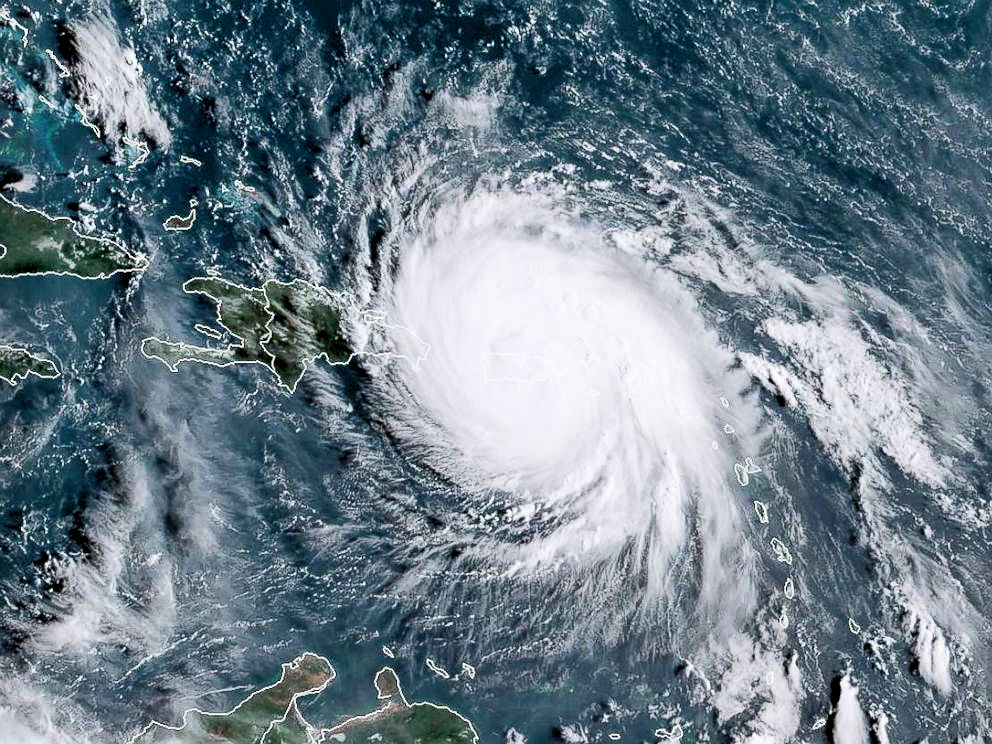 Caribbean.
Caribbean. 
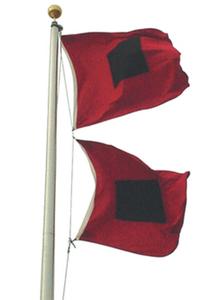 "All power lines are down, our telephone lines are down, internet lines, everything is down," came a reply to Antoine's inquiry. "Roads are blocked with debris. No confirmed information on fatalities or injuries."
"All power lines are down, our telephone lines are down, internet lines, everything is down," came a reply to Antoine's inquiry. "Roads are blocked with debris. No confirmed information on fatalities or injuries.".JPG) FMRE President Alfonso Tomez, XE2O, said participation from Mexican radio amateurs has been excellent, and two mobile communication units have been deployed, one south of Mexico City, where communication problems have been reported, and the other in communities surrounding the city, where communication problems exist. A FMRE representative has been stationed in the emergency operations center in Mexico City as well. Most of the traffic, Tomez said, has involved missing persons.
FMRE President Alfonso Tomez, XE2O, said participation from Mexican radio amateurs has been excellent, and two mobile communication units have been deployed, one south of Mexico City, where communication problems have been reported, and the other in communities surrounding the city, where communication problems exist. A FMRE representative has been stationed in the emergency operations center in Mexico City as well. Most of the traffic, Tomez said, has involved missing persons.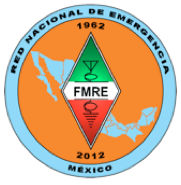 Tomez said communication problems persist because of the heavy volume of calls and message traffic over the cell telephone networks. Around 300 people have been killed and 30 buildings collapsed, he said. The earthquake came 32 years to the day after a 1985 magnitude 8.0 earthquake struck Mexico City, killing some 9,500 people in and around the capital city. Just one week ago, a magnitude 8.1 earthquake struck off Mexico's southern coast, killing more than 60 people and causing considerable damage.
Tomez said communication problems persist because of the heavy volume of calls and message traffic over the cell telephone networks. Around 300 people have been killed and 30 buildings collapsed, he said. The earthquake came 32 years to the day after a 1985 magnitude 8.0 earthquake struck Mexico City, killing some 9,500 people in and around the capital city. Just one week ago, a magnitude 8.1 earthquake struck off Mexico's southern coast, killing more than 60 people and causing considerable damage. Every 2 weeks, your host, QST Editor-in-Chief Steve Ford, WB8IMY, and the Doctor himself, Joel Hallas, W1ZR, will discuss a broad range of technical topics. You can also e-mail your questions to
Every 2 weeks, your host, QST Editor-in-Chief Steve Ford, WB8IMY, and the Doctor himself, Joel Hallas, W1ZR, will discuss a broad range of technical topics. You can also e-mail your questions to %20Irma.jpg)
 On March 27, 2017, the FCC adopted the 2012 World Radiocommunication Conference (WRC-12) implementation Report and Order (
On March 27, 2017, the FCC adopted the 2012 World Radiocommunication Conference (WRC-12) implementation Report and Order (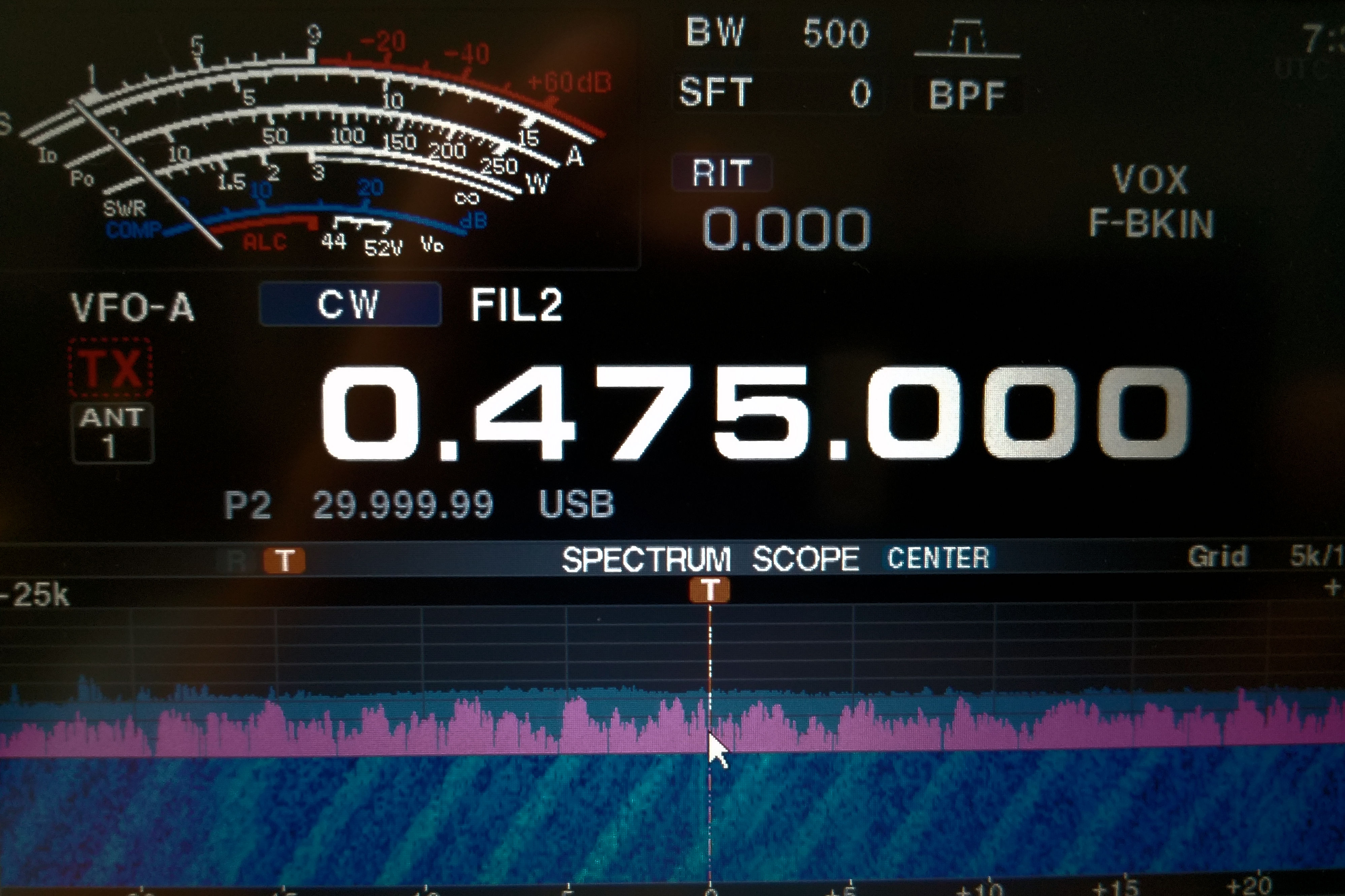 ARRL 630-Meter Experiment Coordinator Fritz Raab, W1FR, advised radio amateurs who anticipate using either band to read the Federal Register posting "to understand frequencies, power limitations, and operating modes permitted." Experimental Group participant Ed Cole, KL7UW, has been operating as WD2XSH/45 with 100 W into a 43 × 122-foot base-loaded inverted L, achieving about 3 W ERP. In a message to the Topband Reflector, Eric Tichansky, NO3M, noted that during his operations as part of the ARRL Experimental Group and with his own FCC Part 5 Experimental license, he enjoyed "many cross-country QSOs at QRP power levels" using a 67-foot top-loaded vertical that shares the radial field for his 160-meter antenna. The
ARRL 630-Meter Experiment Coordinator Fritz Raab, W1FR, advised radio amateurs who anticipate using either band to read the Federal Register posting "to understand frequencies, power limitations, and operating modes permitted." Experimental Group participant Ed Cole, KL7UW, has been operating as WD2XSH/45 with 100 W into a 43 × 122-foot base-loaded inverted L, achieving about 3 W ERP. In a message to the Topband Reflector, Eric Tichansky, NO3M, noted that during his operations as part of the ARRL Experimental Group and with his own FCC Part 5 Experimental license, he enjoyed "many cross-country QSOs at QRP power levels" using a 67-foot top-loaded vertical that shares the radial field for his 160-meter antenna. The 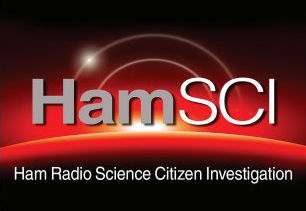 In their presentation, "
In their presentation, "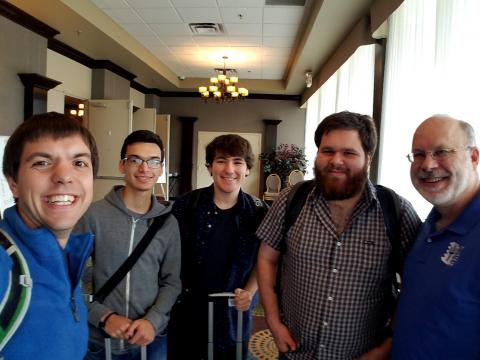
.jpg) The WPT issue came up earlier this month at the meeting of
The WPT issue came up earlier this month at the meeting of 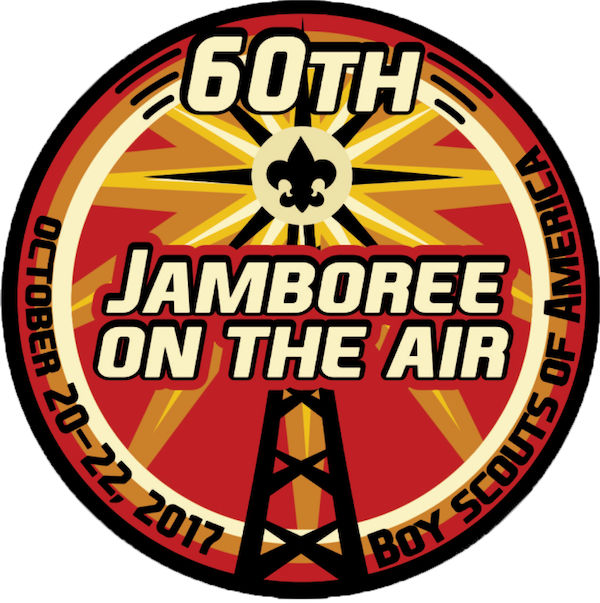 "Our number one message at this time is to register their station and get ready for
"Our number one message at this time is to register their station and get ready for 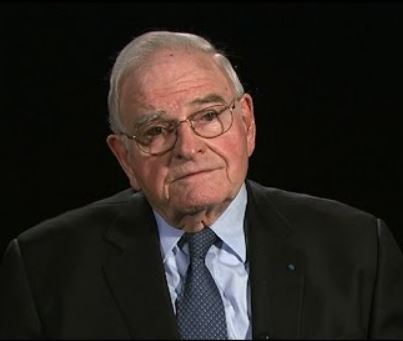 "Gray transformed the Institute through his commitment to enhancing undergraduate education and increasing the presence of women and underrepresented minorities on campus," an MIT obituary
"Gray transformed the Institute through his commitment to enhancing undergraduate education and increasing the presence of women and underrepresented minorities on campus," an MIT obituary  Gray said he was influenced by his utility technician father's curiosity about, and experiments with, electricity that led him into his own interest in radio, starting with a crystal radio and later a regenerative receiver built during World War II when Amateur Radio was suspended for the duration. Gray said he entered high school "with the conviction I was going to study electrical engineering."
Gray said he was influenced by his utility technician father's curiosity about, and experiments with, electricity that led him into his own interest in radio, starting with a crystal radio and later a regenerative receiver built during World War II when Amateur Radio was suspended for the duration. Gray said he entered high school "with the conviction I was going to study electrical engineering."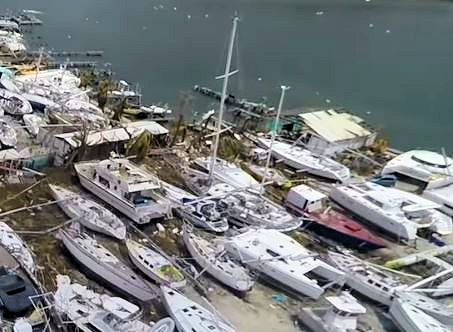 Hurricane Damage Forces Changes to Planned DX Operations: Members of Argentina's Yaguarete DX Group, expected to be active as PJ7T from Sint Maarten from October 24 through November 4, have cancelled their plans due to Hurricane Irma damage. "Hurricane Irma destroyed 95% of infrastructure on the island, and it will be impossible to arrive and live there for a long time," the group said in its announcement. It has changed the destination for its fall DXpedition to San Andres Island and is in the process of working out the formalities. Meanwhile, the PJ7TM station of Tom Metz, K2GSJ, is said to have been "wiped out," and Metz is heading there in October to repair the damage. Post-Hurricane Irma
Hurricane Damage Forces Changes to Planned DX Operations: Members of Argentina's Yaguarete DX Group, expected to be active as PJ7T from Sint Maarten from October 24 through November 4, have cancelled their plans due to Hurricane Irma damage. "Hurricane Irma destroyed 95% of infrastructure on the island, and it will be impossible to arrive and live there for a long time," the group said in its announcement. It has changed the destination for its fall DXpedition to San Andres Island and is in the process of working out the formalities. Meanwhile, the PJ7TM station of Tom Metz, K2GSJ, is said to have been "wiped out," and Metz is heading there in October to repair the damage. Post-Hurricane Irma 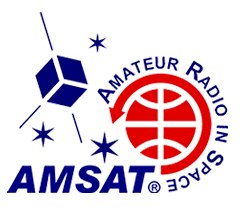 AMSAT 2017 Annual Meeting and Space Symposium Issues Second Call for Papers: The AMSAT 2017 Annual Meeting and Space Symposium has issued a second call for papers. The event takes place the weekend of October 27-29 in Reno, Nevada. AMSAT invites proposals for papers, symposium presentations, and poster presentations are invited on any topic of interest to the Amateur Satellite community. Tentative presentation titles are requested as soon as possible, with a final copy due by October 6 for inclusion in the printed proceedings.
AMSAT 2017 Annual Meeting and Space Symposium Issues Second Call for Papers: The AMSAT 2017 Annual Meeting and Space Symposium has issued a second call for papers. The event takes place the weekend of October 27-29 in Reno, Nevada. AMSAT invites proposals for papers, symposium presentations, and poster presentations are invited on any topic of interest to the Amateur Satellite community. Tentative presentation titles are requested as soon as possible, with a final copy due by October 6 for inclusion in the printed proceedings. 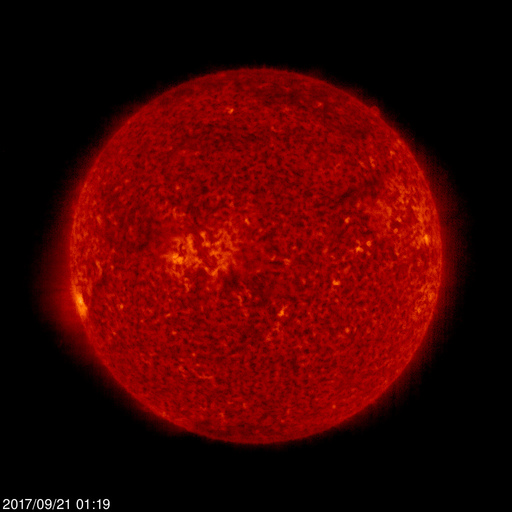 Average daily sunspot numbers declined over the past few weeks from 87.3 to 45 and 13.6, and average daily solar flux from 114.1 to 97.6 and 72.6.
Average daily sunspot numbers declined over the past few weeks from 87.3 to 45 and 13.6, and average daily solar flux from 114.1 to 97.6 and 72.6.







